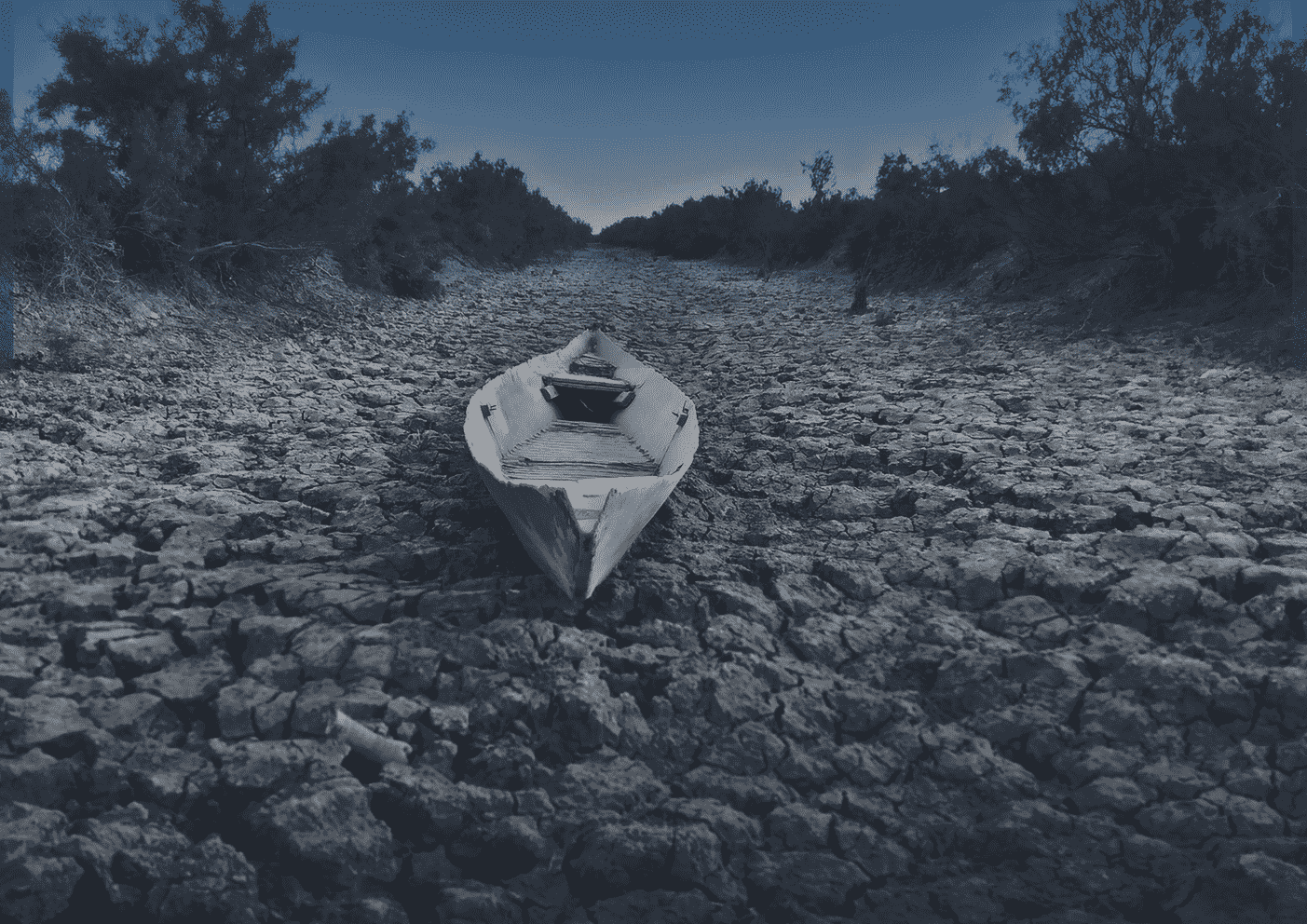Executive Summary
Iraq and the Kurdistan Region have faced a major crisis from both external and internal dimensions: the water scarcity crisis. At present, Iraq and the Kurdistan Region are confronting an unprecedented threat of drought in their history, particularly as the annual renewable water availability per individual is currently approximately 600 cubic meters and is expected to decrease by half or more in the coming decade.
In terms of external causes of drying, Turkey emerges as one of the most significant factors. Since 1980, Turkey has constructed 16 major projects and dams on both the Tigris and Euphrates rivers within the framework of the GAP project. The Atatürk Dam, one of the four largest dams in the world, has the capacity to store 48.7 billion cubic meters of water and generate 2,520 megawatts of electricity. These projects have resulted in a 40% decrease in water inflow to Iraq and the Kurdistan Region, with Turkey currently controlling 88% of the Euphrates water and 56% of the Tigris water entering Iraq.
Iran, as another neighboring country, has constructed over 20 dams and projects on the shared rivers of Alwand, Sirwan, and Little Zab, with a storage capacity of 1.87 billion cubic meters of water on the Sirwan River alone. Iran has also completely dried some rivers, such as Kangir and Kanjan Cham, and since 2011 has openly declared its intention to cut off all rivers flowing from Iran to Iraq due to its own water scarcity.
From an internal challenges perspective, Iraq ranks fifth among the world’s highest water-consuming countries, with each individual using 1,410 cubic meters of water annually. The agricultural sector accounts for 73% of total water consumption, which reached 17.31 billion cubic meters in 2022. However, traditional irrigation methods are still in use, and approximately $5 billion worth of agricultural products are imported annually. At the same time, the country faces a major wastewater treatment issue, with only 1.09 billion cubic meters out of 11.25 billion cubic meters of wastewater being treated.
One of the most pressing ongoing challenges in Iraq is the growing population in contrast to declining renewable water resources. Currently, the population of Iraq and the Kurdistan Region stands at 46.1 million people, with each individual having access to 695 cubic meters of renewable water annually. By 2030, when the population is projected to reach 52 million, renewable water availability will decrease to 543 cubic meters per person. By 2035, with an estimated population of 57 million, renewable water will drop to 391 cubic meters per person, half of the current level. This is significantly below the international standard, which requires a minimum of 1,000 cubic meters per person.
The impact of this crisis is also evident in other sectors in Iraq. For instance, in the oil and gas sector, the production of each barrel of oil requires between 1.5 and 3 barrels of water, resulting in the use of 141 million cubic meters of water annually. In the Kurdistan Region, there are also 12 steel production companies that produce 4.7 million tons of steel per year and require 2.8 billion cubic meters of water.
According to the World Resources Institute, Iraq is among the 25 countries in the world with the highest level of basic water stress, scoring 4.14 out of 5. The most at-risk provinces are Al-Qadisiyyah, Najaf, Muthanna, and Kirkuk, while in the Kurdistan Region, Sulaymaniyah and Dohuk face the greatest risk. This water scarcity has become a driver of internal migration. In 2021, 20,000 people migrated due to these conditions; by 2023, the number had reached 130,000, and in 2024, it rose to 696,000. This reflects a 33.8% increase in migration driven by climate change and water scarcity across several Iraqi provinces over three years.
Projections indicate that by 2030, basic water stress will rise in all provinces, particularly in southern regions such as Najaf, Al-Qadisiyyah, and Karbala. Pressure on the population is expected to reach the highest level of 5 points, followed by the industrial sector at 4.5 points. Iraq also ranks 122nd globally in terms of readiness to confront climate change, placing it among the most vulnerable countries.
Finally, action is required on three levels: First, at the international level, to internationalize the issue at the United Nations and to oppose the alteration of water flow patterns by Turkey and Iran. Second, at the domestic level, by developing water infrastructure and investing in wastewater treatment. Third, at the individual level, by raising public awareness and establishing educational programs focused on the responsible use of water.

